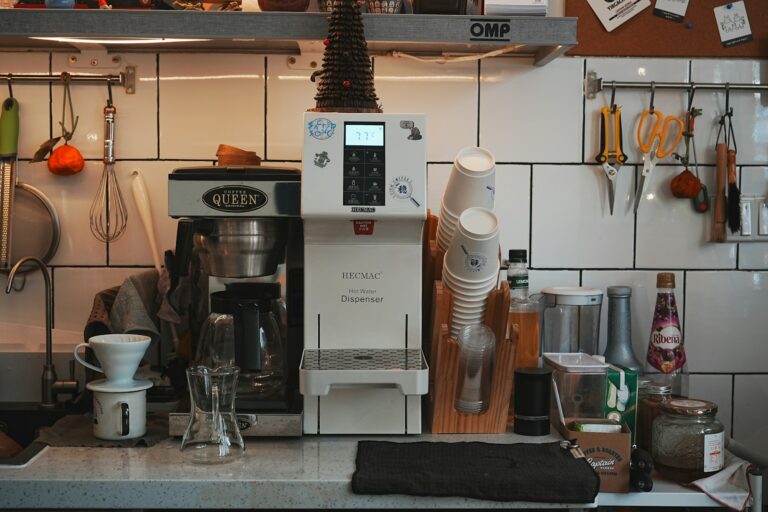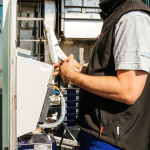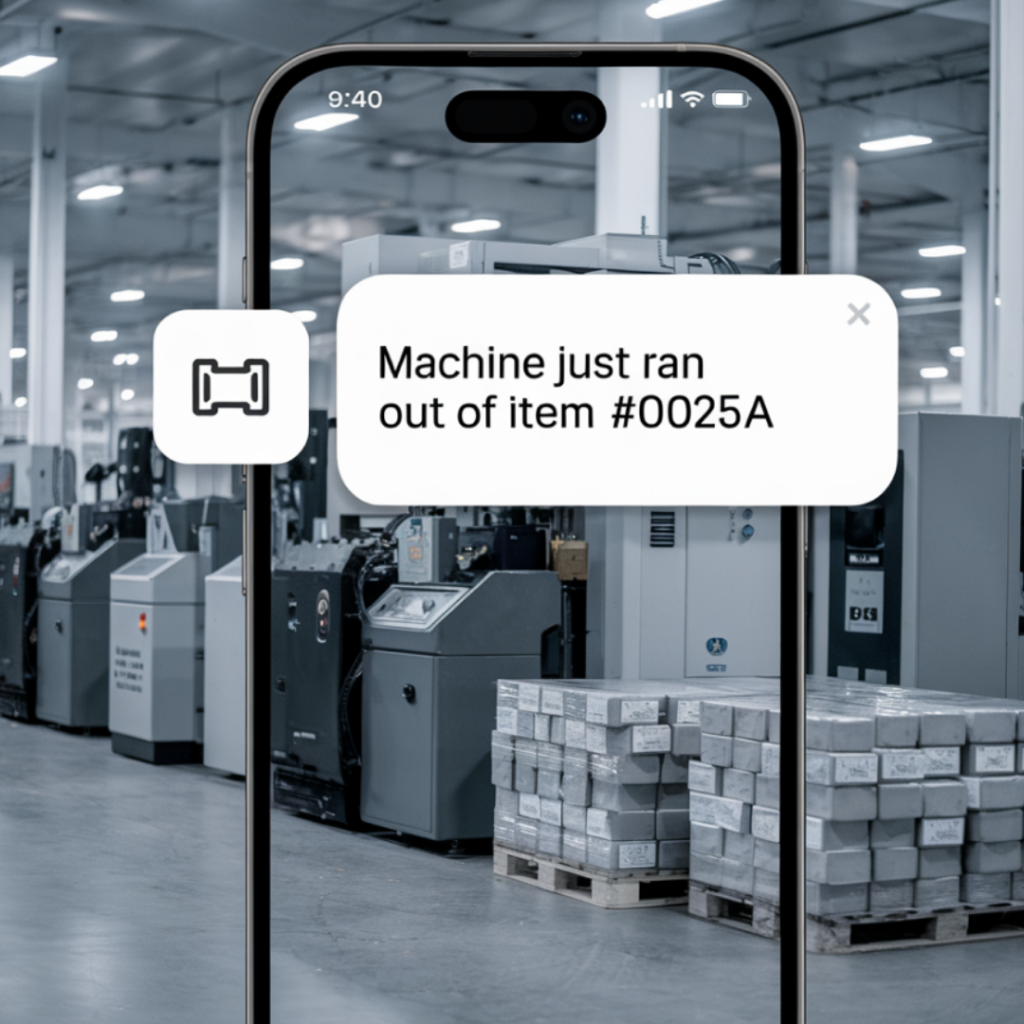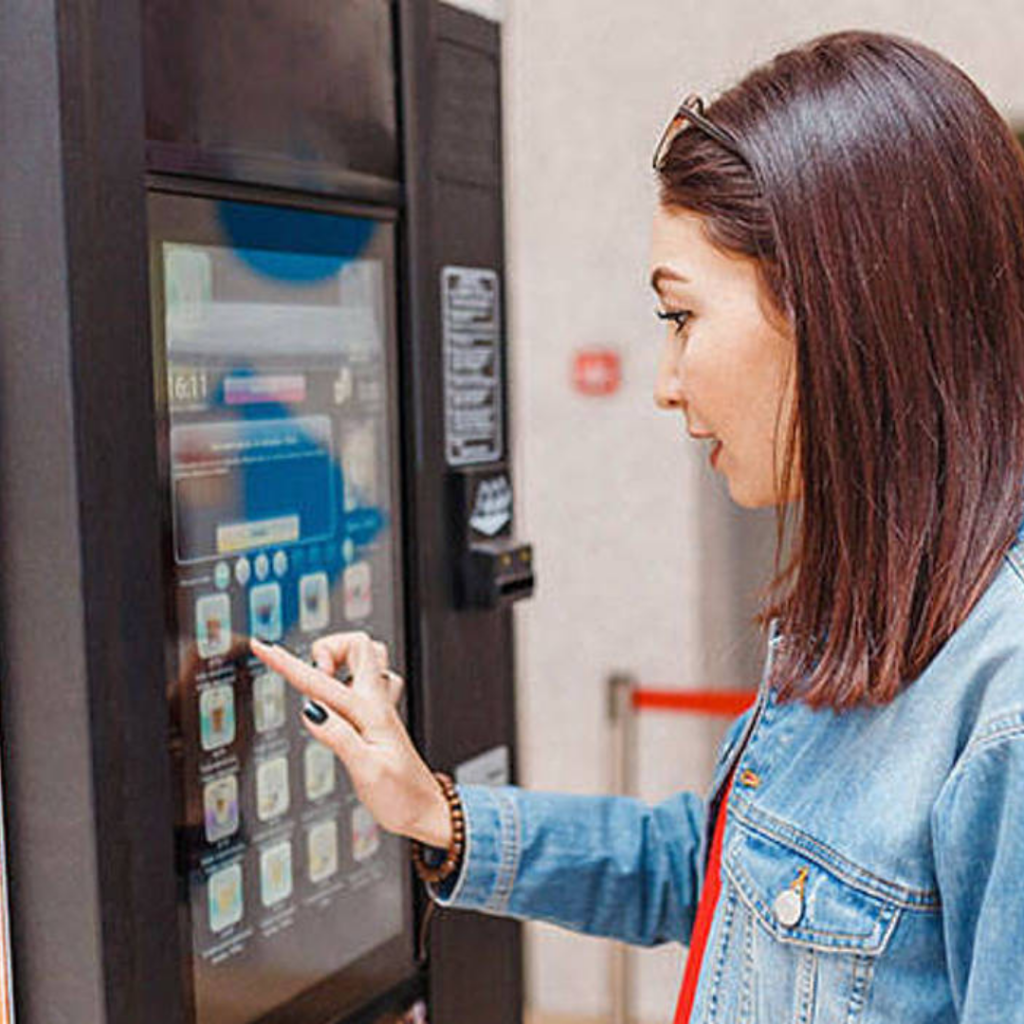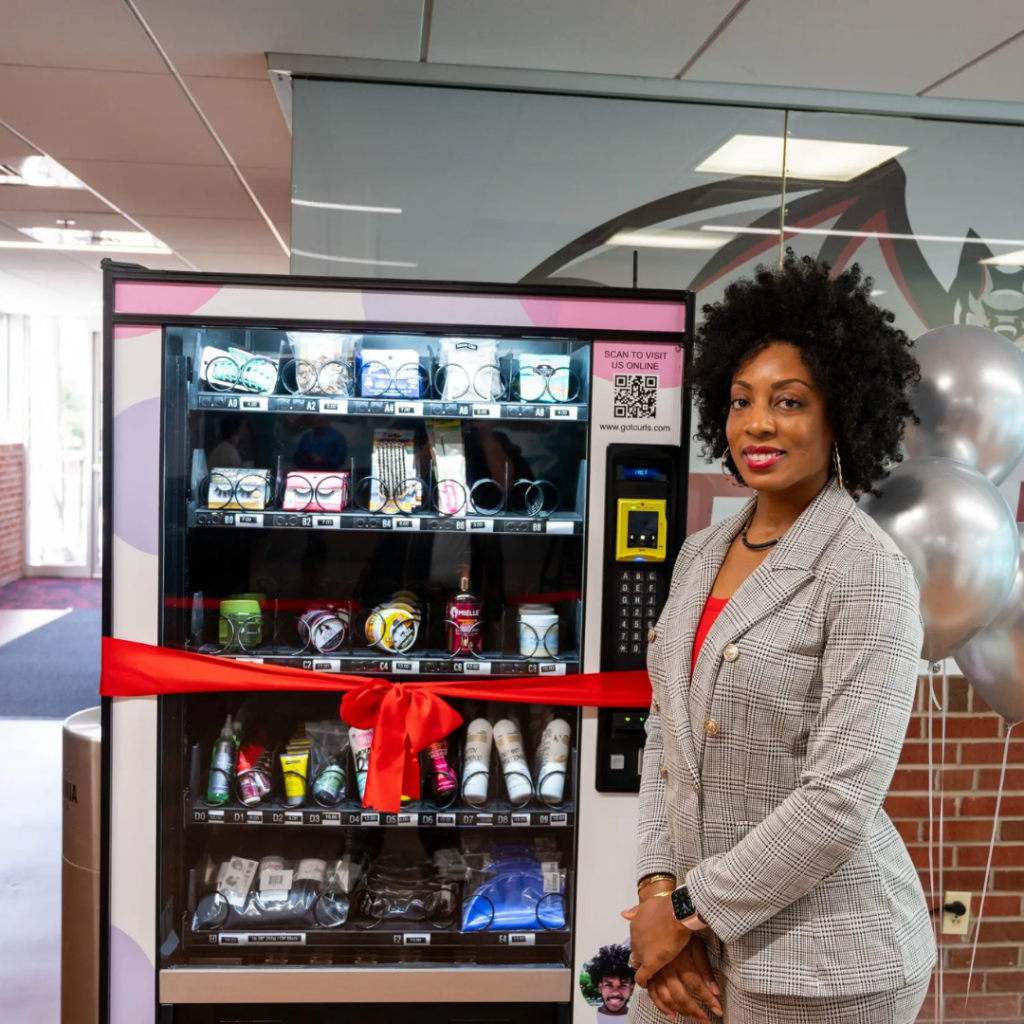Coffee Vending Machines Surge In 2025: Why The Coffee Vending Machine Market Is Expanding Faster Than Ever

The coffee vending machine market is experiencing significant growth in 2025. North America’s thirst for quality vending-served coffee is rising again as workplaces, campuses, and public venues reopen. The U.S. office coffee service market alone is valued at approximately $2.49 billion and is projected to grow at over 17 % annually through 2028.
Operators are responding by replacing old machines with advanced units that deliver both hot and iced specialty drinks. At the same time, contactless payments, remote monitoring, and AI-driven customization are becoming standard features in new machines. These changes are turning a once-niche category into a full-scale investment opportunity.
Whether you manage a route today or are exploring vending options, the opportunity in the coffee vending machines market is real and measurable. This article shows you why, how, and where to invest in 2025 and beyond.
Market Overview: Coffee Vending Machine Market Growth In 2025
Rising Consumer Coffee Demand
Coffee consumption is reaching new heights in the United States. The National Coffee Association reports that 67 % of adults drank coffee yesterday. This is the most in over twenty years. Also, nearly half of coffee drinkers now choose specialty beverages. These facts signal strong demand for machines that serve café-style drinks on demand.
Industry Growth Across Vending
Industry coverage confirms the trend. According to Vending Times, over 80 % of micromarket operators include coffee machines, and 43 % of those offer bean-to-cup systems. This shows how coffee is becoming a central part of unattended beverage service. Moreover, the U.S. retail vending machine market was valued at about USD 15 billion in 2024 and is projected to reach USD 19.95 billion by 2033. This growth is driven by machines with cashless payments and premium beverage options.
Global Market Forecasts
Research firms project solid growth for coffee vending specifically. A report from HTF Market Intelligence estimates the global coffee vending machines market will grow at roughly 4.7 % annually through 2030. Meanwhile, another forecast from Finance Yahoo shows a CAGR near 8.5 % from 2023 to 2031. These numbers underline the rising demand for automated coffee service worldwide.
What This Means For Operators
All data points together send a clear message: the coffee vending machine market is ready for investment. Consumers want better drinks and businesses want lower labor costs. Consequently, machines that produce specialty and iced coffee gain traction. For operators, that means significant opportunity in 2025 and beyond.
What Is Fueling The Coffee Vending Machine Market Boom
Shift Toward Automated Coffee Service
The coffee vending machine market continues to grow in 2025 because many locations want reliable, low-labor service. Businesses face rising labor costs, and automated machines help reduce staffing needs. At the same time, customers expect quick service. Many people also prefer contactless options, which modern machines now support. As a result, more operators install machines that brew consistent coffee with simple upkeep.
Demand for Specialty and Custom Drinks
The rise in specialty coffee is also driving growth. Reports from the National Coffee Association show that flavored lattes, iced coffee, cold brew, and blended drinks continue to gain popularity. Younger consumers choose iced or flavored drinks at higher rates, which pushes operators to add machines that offer more than basic black coffee. This shift increases interest in advanced systems that can produce multiple drink styles on one platform.
Better Technology and Customer Experience
Technology plays a major role in this boom. New machines include touchscreen menus, cashless payments, and remote monitoring. These features make the machines easier to manage and more appealing to customers. Many unit types, such as bean-to-cup systems and smart compact brewers, now match café-style flavor with very fast output. Because of this improvement, more buyers see vending coffee as a true alternative to a staffed café.
Expanding Placement Opportunities
More industries now support coffee vending. Offices place machines to offer perks without adding staff. Universities use them to serve students at all hours. Hospitals depend on them for round-the-clock convenience. Hotels, airports, and gyms also adopt machines because they generate steady sales. These expanding opportunities create strong momentum for the entire coffee vending machine market.
Coffee Vending Machine Types Leading The Market
Iced Coffee Vending Machines
Iced coffee continues to grow in popularity, especially among younger consumers. Many surveys show that more than 60 percent of Gen Z coffee drinkers choose iced coffee over hot coffee. Because of this shift, operators look for machines that can serve chilled coffee on demand. An iced coffee vending machine helps meet this rising demand in offices, schools, gyms, and transportation hubs. It also creates strong margins because customers are willing to pay more for cold specialty drinks.
Pro Coffee Vending Machines
High-traffic locations need machines that deliver steady output and consistent quality. A pro coffee vending machine fits these needs because it handles long operating hours and frequent use. These machines often support bean-to-cup brewing, flavored drinks, and faster dispense times. As traffic increases in airports, hospitals, and busy corporate sites, pro units become a reliable way to serve many customers with minimal labor.
Tabletop Coffee Vending Machines
Small locations need flexible equipment. A tabletop coffee vending machine works well in compact areas such as break rooms, co-working spaces, and smaller retail spots. Even with a small footprint, these units still produce quality drinks and operate with simple maintenance. Their size makes them an easy upgrade for locations that want coffee service without installing a large machine.
Bean-to-Cup Coffee Machines
Bean-to-cup systems remain one of the strongest performers in the coffee vending machine market. These machines grind beans fresh for every drink, which improves taste and consistency. More operators choose this category because customer expectations continue to rise. With fresh brewing, a machine can produce café-style quality without adding staff. This makes bean-to-cup a top choice for many medium to high-traffic locations.
Instant and Hybrid Coffee Machines
Some locations prefer simple service with low operating costs. Instant and hybrid coffee machines meet that need. These machines use powdered ingredients or a combination of formats to deliver fast drinks. They perform well in budget-conscious sites or places with moderate traffic. Their straightforward setup and low upkeep help new operators enter the coffee vending machine market with minimal risk.
Each machine type serves a different purpose. However, all of them support the same goal. They give customers consistent coffee and help operators manage costs. This variety also allows operators to choose the right model for each location and expand their routes with confidence.
Market Statistics And Industry Reports
Industry Data Shows Consistent Growth
The coffee vending machine market continues to gain strength in 2025, supported by clear data from trusted industry publications. Reports from Automatic Merchandiser show that coffee remains one of the top revenue-producing categories in vending, with hot beverage sales rising steadily over the last two years. Their 2024 State of the Industry report highlighted strong demand for bean-to-cup systems and noted that more operators are adding premium coffee machines to replace older units that can no longer meet customer expectations.
Insights From Vending Times
Vending Times also reports measurable growth across the beverage vending segment. In a recent industry analysis, the publication noted that more than 80 percent of micro market operators now include coffee service as part of their offering. The same report indicated that nearly half of these operators use machines capable of producing specialty drinks, including lattes, mochas, and iced coffee. As customer habits shift toward convenience and customization, advanced coffee machines continue to outperform traditional brewers.
Global Research Confirms Market Expansion
Global research firms are tracking this expansion as well. Grand View Research estimates that the global coffee vending machine market exceeded two billion dollars in 2024 and will continue to grow due to rising demand in workplaces, education centers, and healthcare environments. Statista also highlights steady increases in out-of-home coffee consumption worldwide, driven by busier lifestyles and broader access to self-serve coffee solutions.
Clear Opportunities For Operators
These reports point to a clear trend. More businesses want reliable coffee service without the cost of staffing a café. Customers expect better flavor and more choice, and modern machines deliver both. Because of these factors, 2025 presents a strong opportunity for operators to expand into coffee vending or upgrade their existing routes. With solid data supporting growth, the market shows promise for new and experienced operators alike.
Cost And ROI: Why Coffee Vending Is A Strong Investment
Clear Costs That Are Easy To Manage
The coffee vending machine market attracts many new operators in 2025 because the cost structure is simple and predictable. Most commercial machines require a one-time purchase or a monthly lease. Ingredients such as beans, powder mixes, and flavor syrups remain stable in price, which helps operators forecast expenses with confidence. Electricity use is also low compared to many other vending categories. As a result, operators can estimate monthly operating costs accurately and avoid surprise expenses.
Strong Profit Margins Across Most Locations
Profit potential is one of the biggest reasons operators move into coffee vending. The cost to produce a cup of coffee often ranges between fifteen and forty cents, depending on the machine type and recipe. However, the typical selling price ranges from one dollar to three dollars in most locations. This wide gap creates solid margins and a fast return on investment. Busy locations can generate dozens or even hundreds of cups per day, which strengthens revenue and improves cash flow.
Fast Payback Periods
Return on investment is a major advantage in the coffee vending machine market. A well-placed machine can reach payback in several months, especially when it offers multiple drink choices. Machines with iced options or bean-to-cup features often perform even better because customers value quality and variety. As more people request specialty drinks, machines that serve lattes, iced coffees, or flavored drinks often achieve higher average sales per visit.
Strong Demand In Many Environments
Coffee vending performs well in a wide range of locations. Offices adopt machines to provide perks without adding staff. Colleges depend on self-serve solutions for late-night and early-morning traffic. Hospitals rely on automated coffee because workers need access around the clock. Hotels, airports, gyms, and retail stores also install machines because customers want fast options while on the move. These diverse opportunities allow operators to build routes that match different customer profiles.
Reliable Long-Term Growth Potential
Long-term demand for coffee remains strong. Coffee continues to outperform many other beverage categories, and consumption is rising among younger adults. With reliable demand and low daily operating costs, coffee vending remains one of the most stable investments in the vending industry. Operators who upgrade their routes now can benefit from both current demand and future growth in the coffee vending machine market.
Opportunities For New Operators In 2025
A Market That Welcomes New Entrants
The coffee vending machine market offers a clear opening for new operators in 2025. Many routes require minimal experience, and modern machines handle most tasks automatically. Because maintenance is simple and ingredient costs remain low, new investors can start with only a few machines and expand as demand grows. This accessibility makes coffee vending one of the most appealing categories for beginners.
Low Start-Up Requirements
Coffee vending does not require a large staff, a storefront, or complex logistics. Operators can begin with machines placed in offices, schools, gyms, or small retail environments. Machines with compact footprints, such as tabletop units, make it easy to place equipment in tight spaces. As routes grow, operators can add larger machines with more drink options to handle busier locations.
Strong Support From Location Owners
Many businesses want coffee service but do not want to manage it themselves. This creates strong placement opportunities for new operators. Facilities often welcome machines that offer hot and iced coffee because they improve customer satisfaction without requiring additional labor. As more locations look for perks that support employees, students, or visitors, new operators find it easier to secure long-term placements.
Flexible Models For Different Budgets
New operators can choose from several entry points based on budget. A tabletop machine offers a low-cost start with simple maintenance. A pro machine supports high-traffic environments and generates higher daily sales. An iced coffee machine appeals to younger audiences and performs well in universities and gyms. This variety gives new operators the freedom to build a route that matches their financial goals.
Room For Growth Across Many Industries
Demand continues to rise in corporate offices, education, healthcare, hospitality, and transit locations. Each industry has different peak times, traffic levels, and drink preferences. Operators who understand these differences can scale their routes strategically. Because of this versatility, the coffee vending machine market offers steady growth for both new and experienced operators in 2025.
The Future Of The Coffee Vending Machine Market
Smarter Machines With Better Technology
The future of the coffee vending machine market is shaped by smarter, faster, and more connected machines. Many new units now include AI-driven drink selection, touchscreen menus, and precise brewing controls. Operators benefit from remote monitoring that tracks sales, ingredient levels, and machine status in real time. As these features improve, machines provide a smoother experience for both customers and operators.
Growth In Cashless And Mobile Payments
Cashless technology will continue to drive the market in 2025 and beyond. More customers prefer to pay with phones or cards instead of cash. Machines that accept tap payments or mobile wallets create a faster checkout process and reduce mechanical issues. This shift also helps operators track every transaction accurately, which improves reporting and route planning.
More Demand For Iced And Specialty Coffee
Specialty drinks will play a major role in future growth. Young adults continue to choose iced, flavored, and custom drinks at high rates. Locations that offer these choices often see higher sales and longer customer engagement. Machines that support multiple drink styles will remain in demand, especially in universities, gyms, and high-traffic retail areas.
Expansion Into Micro Markets And New Venues
Micro markets and unattended retail spaces are becoming common in workplaces and public buildings. Coffee vending fits naturally into these environments because machines run with low labor and deliver fast service. As more businesses adopt micro markets, the need for high-quality coffee equipment will increase. Airports, hotels, hospitals, and entertainment venues will continue to expand these spaces in the coming years.
Operator Advantages In The Coming Years
Operators who upgrade early benefit the most from these changes. New technology helps reduce downtime, improve drink consistency, and lower operating costs. As a result, operators can scale routes faster and secure better placements. With steady coffee demand and modern features improving output, the coffee vending machine market is positioned for long-term strength and ongoing innovation.
Conclusion
The coffee vending machine market is entering one of its strongest growth periods in years. Rising coffee consumption, increased demand for specialty drinks, and the need for low-labor service options all contribute to this momentum. Industry reports from respected sources such as the National Coffee Association, Vending Times, and Automatic Merchandiser confirm that more locations are investing in automated coffee systems to meet customer expectations.
Operators now have access to machines that deliver higher quality, faster service, and better consistency than ever before. With smart technology, cashless payments, and improved drink variety, modern equipment offers strong margins and reliable daily sales. As new sectors adopt coffee vending, from universities to healthcare facilities, the number of profitable placement opportunities continues to rise.
For new and experienced operators, the opportunity is clear. Investing in updated coffee vending machines in 2025 offers a path to strong revenue, scalable growth, and long-term stability. With the right mix of locations and machine types, operators can build a route that performs well today and stays competitive in the years ahead.



